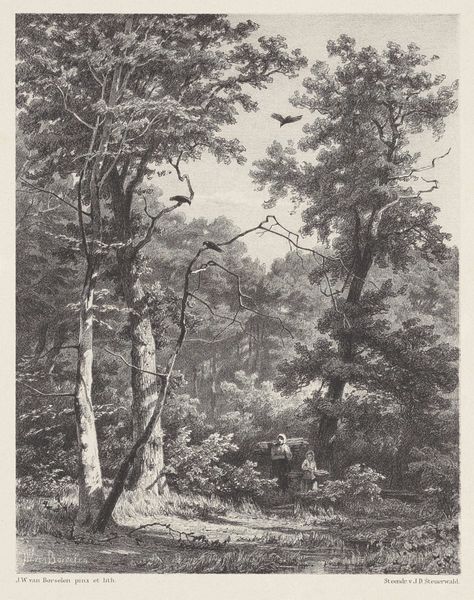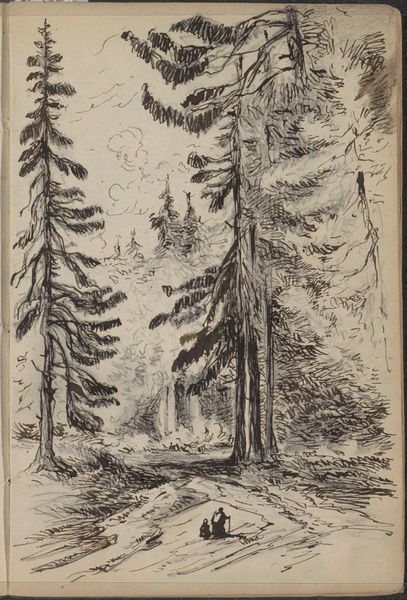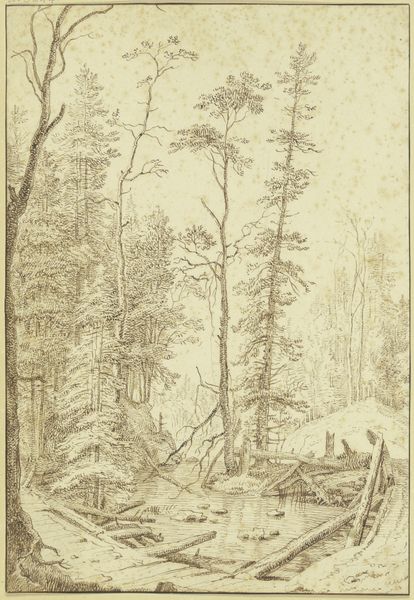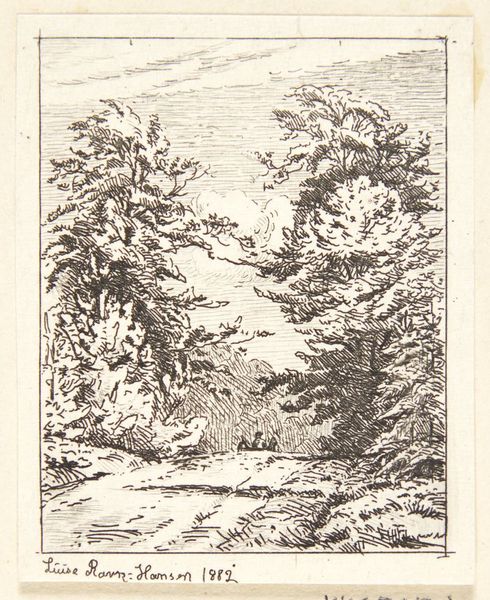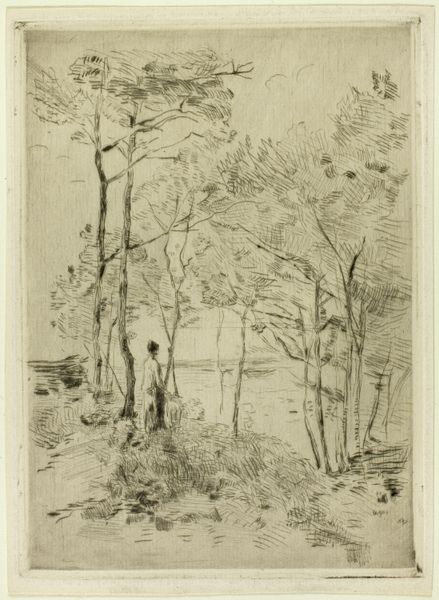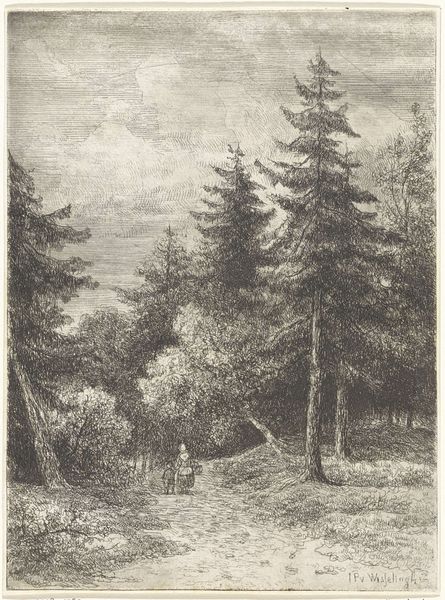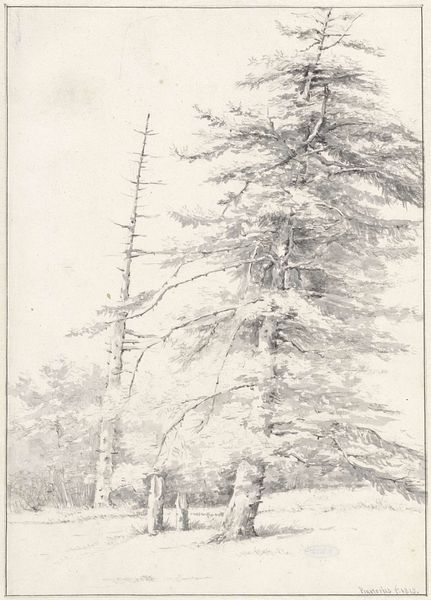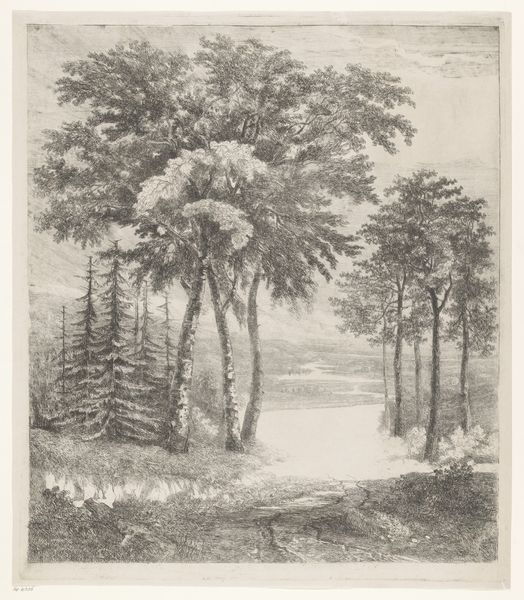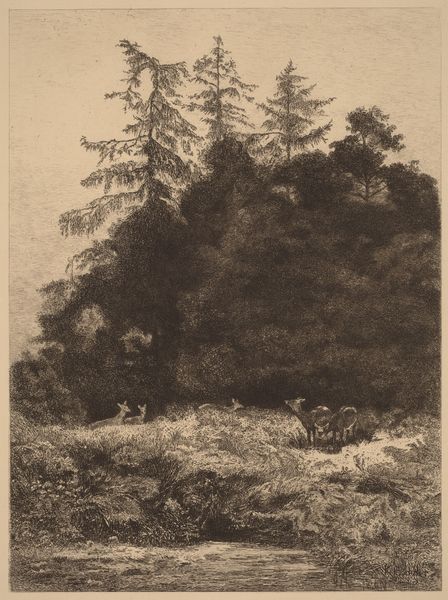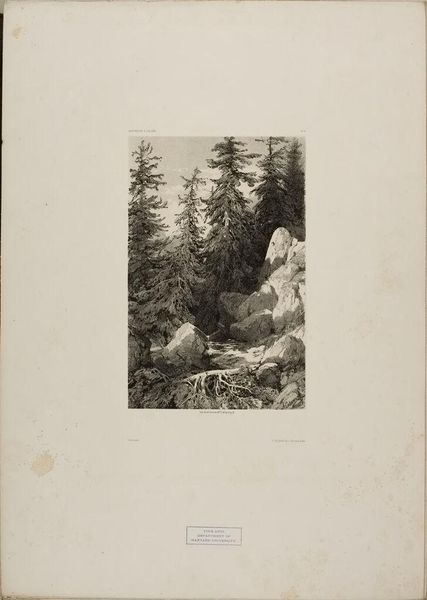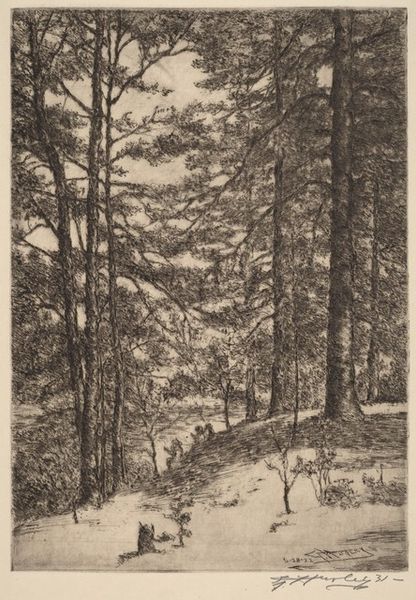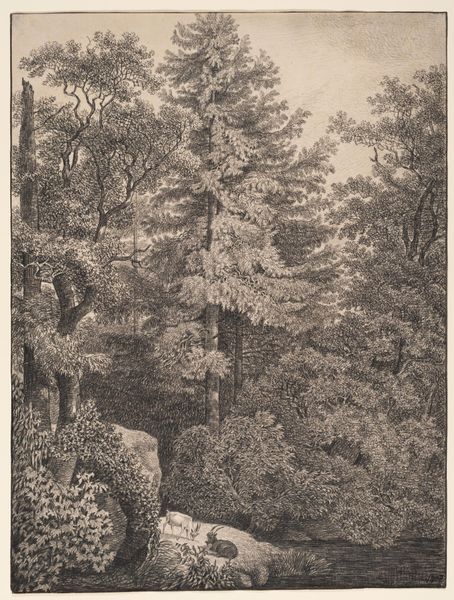
#
pencil drawn
#
light pencil work
#
ink drawing
# print
#
pencil sketch
#
pencil drawing
#
ink drawing experimentation
#
pen-ink sketch
#
pencil work
#
watercolour illustration
#
watercolor
Copyright: National Gallery of Art: CC0 1.0
Editor: Here we have Ernest Haskell's print, titled "Spectre". The work uses fine, delicate lines to render a woodland scene, dominated by a large, gnarled tree. The overall tone is quite haunting, wouldn't you say? What strikes you most when you look at this piece? Curator: The visual vocabulary is certainly intriguing, evoking a sense of isolation that aligns with turn-of-the-century artistic trends. Haskell seems interested in representing the public's changing relationship with the landscape, perhaps revealing anxieties surrounding industrialization through this, frankly, rather ghostly, image. What purpose might those skeletal trees serve? Editor: Possibly representing nature's decline? I see how the trees in the background look almost threatening. It also reminds me of the American landscape painting tradition. Curator: Precisely. Landscape painting had always played a crucial role in shaping American national identity, and even national destiny. How does the historical positioning of this work inform your viewing of this landscape? Do you see anything specifically American about the image's perspective on land? Editor: Thinking about Haskell positioning himself, his work highlights, not celebrates, anxieties of loss. It's about looking back at tradition but depicting something altogether more sinister. It’s like Manifest Destiny, but failing, or running its course. Curator: Indeed. The socio-political undercurrent is potent. Haskell presents not a celebration of the pastoral ideal, but rather a meditation on nature's fragility in a rapidly transforming world, viewed through an American lens. Editor: I’ve definitely learned a lot about the changing role of nature at the time through this piece! Curator: And I see anew how our dialogue can unearth those hidden dimensions, underscoring art's enduring power as a socio-historical mirror.
Comments
No comments
Be the first to comment and join the conversation on the ultimate creative platform.
